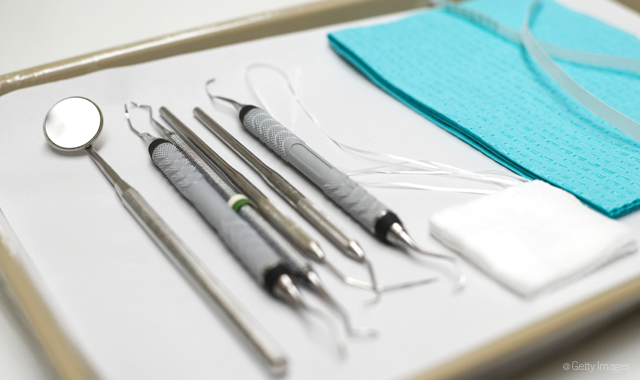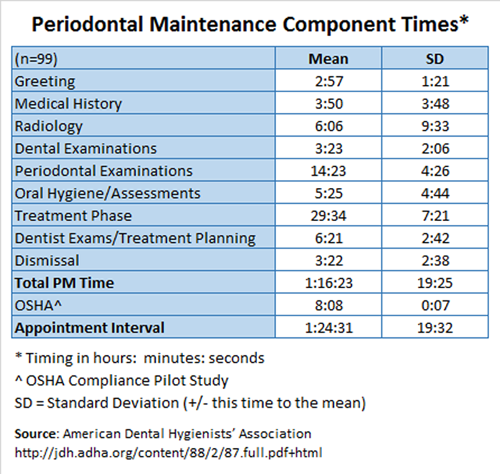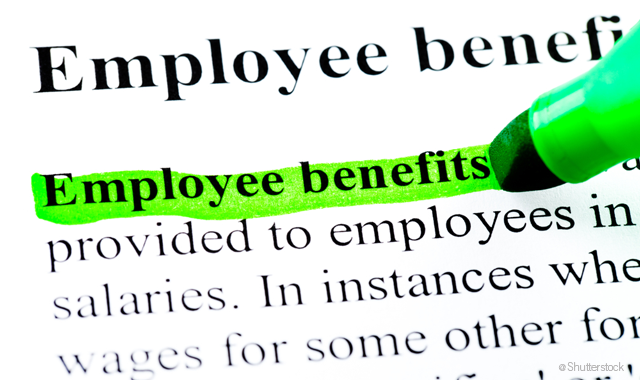6 things hygienists wish they could tell their boss/dentist/doctor
As hygienists, we respect our employer and further the doctor’s cornerstone role in the office and to the patients. For that reason, there are some topics hygienists feel uncomfortable bringing up; either because of this respect, for fear of coming off as needy or as a prima donna or blatantly put, the fear of being replaced.
As hygienists, we respect our employer and the doctor’s cornerstone role in the office.

For that reason, there are some topics hygienists feel uncomfortable bringing up; either because of this respect, for fear of coming off as needy or as a prima donna or blatantly put, the fear of being replaced. I hear from an uncountable number of hygienists who express concerns that they face on a day-to-day basis. Here are some of those concerns that hygienists are coming to me about the most.
Continue to the following page to see what hygienists wish their bosses knew...




New instruments
If you needed a new high-speed handpiece, carver or bur, you’d buy it with no question because you need it to do your job. Hygiene instruments are the same. News flash: stainless steel instruments need to be replaced every nine to 18 months, and sometimes even more frequently depending on the number of set-ups, difficulty and amount of patients seen, among other factors. For your hygienist to provide the highest standard of care to their (and your) patients, they need equipment that’s up to par. Without proper instruments, your hygienist isn’t only doing a disservice to the patient, but it takes a toll on the hygienists’ body. You are literally shortening your hygienists’ careers if they don’t have adequate instruments.
Not to mention your hygienist has to work harder, not smarter - and ultimately, time is money. Allow your hygienist to work efficiently. Another analogy: If a computer was out of date or not working properly you’d replace it - it’s a business expense. The same goes for you hygienists’ equipment and instruments. Hygienists should bring in on average one third of your total revenue. Not to mention that an estimated 50-80 percent of your treatment (restorative) is generated through hygiene exams. Allow them to do their job properly because they do produce for your office and add to the bottom line. Get them the instruments and equipment they need, just as you do for yourself.



Shortening hygiene appointment times
The graphic here depicts the breakdown of a periodontal maintenance appointment from the Journal of Dental Hygiene/American Dental Hygienists’ Association. Notice that the time needed ranges from one hour and five minutes to one hour and 43 minutes, with an average of one hour and 24 minutes needed. So why are you shortening hygiene appointment times to 50, 40 or even 30 minutes? You may think squeezing another patient into the day increases production, but I would argue it actually does the opposite. If your hygienist does not have the time to explain the need for treatment and conduct thorough education, the office’s bottom line will suffer.
Furthermore, you could be setting yourself up for a malpractice suit. A rushed hygienist can lead to a less thorough medical history, failure to detect oral pathology such as periodontal disease and oral cancer, injury to the patient, less-than-thorough chart notes (which are legal documents), and this list could go on. Don’t think your patients don’t notice when their care is being hurried through and isn’t thorough; they do. This hurts patient retention and referral rates. As a doctor, what steps would you cut out of your crown prep if your appointment time were shortened? No steps can be left out, right? The same logic applies to hygiene appointments. Additionally, how would the quality of care suffer if your time with your patients were shortened? Put yourself in your dental hygienists shoes. The length of appointment times is just as important for your hygienist as they are for you.



Benefits
Paid sick days, vacation days, health insurance. Again, it’s a business expense. You chose to open a business and with that comes the responsibility to treat your employees, who make you money, fairly and with respect. Treat your employees like they matter. If you offer these benefits to your front desk, office manager, and dental assistant, then your hygienist should be offered them too. If you don’t offer any kind of benefits to your employees, it comes off as poor business ethics. Richard Branson once said, “Clients do not come first. Employees come first. If you take care of your employees, they will take care of the clients.” While patients are always hygienist’s first priority, if they don’t have high morale, it shines through to patient care.



Giving your hygienist a raise
Has your hygienist worked hard for you? Are they loyal, take wonderful care of patients and work as a team player? Is your hygienist bringing in approximately 35 percent, or even more, of the practice’s revenue? If so, then their pay should reflect that. This comes back to taking care of your employees and those employees doing the best work when they are fairly compensated for it. Ask yourself if you would stay at a job if you haven’t had a raise in five, 10 or more years? My guess is you probably would feel underappreciated, your morale would be low and you might just choose to move on.



Forcing your hygienist to clock out when a patient no-shows or cancels
Do grocery checkers clock out when no one is in their line? Does your front desk clock out when there’s no patient in the waiting room? No and no. Besides, it’s against Federal Law and the Fair Labor Standards Act to demand this. There’s always something to be done in a dental office. Your hygienist NEEDS to sharpen their instruments, there are operatories to be stocked, sterile to be done, charts that can be audited, among so many other things. To build a team, there needs to be time for teamwork. Again, patients are best treated, and revenue is best generated, when the team works together and the office is working as a whole, happily.


Backing up your hygienist’s treatment recommendations
You and your hygienist should be on the same page when it comes to periodontal treatment. For this reason, when your hygienist highly suggests non-surgical periodontal therapy/SRP or the need for a periodontist referral to a patient, it is extremely helpful if you reinforce the same need. Your hygienist has almost 3,000 hours of periodontal education under their belt; a hygiene diagnosis is part of this training. However, in practice many states require the ultimate diagnosis to come from the doctor, so please consider your hygienist’s recommendations when diagnosing. Hygienists educate and enforce the need for restorative treatment; please return the favor.
Further, if you’re completing an exam on a patient at the end of hygiene treatment, and the hygienist just spent 10 minutes educating on the importance of cleaning interdentally due to the patient’s clinical findings, it doesn’t help when you say, “All looks good, keep up the good work.” Even though you most likely mean you found no decay, to a patient that totally erases the education your hygienist just provided. Also, if your exam is at the end of the appointment, keep in mind that your hygienist just cleaned up months of what was missed during homecare and you didn’t witness the “before” clinical situation. In other words, “everything looks good” because your hygienist just cleaned it up.
The happier the hygienist, or any employee is, the more they will contribute to your practice. For a hygienist to thrive in an office, they must feel appreciated for their role and be given the resources to do their job to the highest of their ability. Actions speak louder than words! If you are a dentist and/or employer that has these things covered, thank you! If not, I hope this is food for thought.
References
Jamison, C.L., Bray, K.K., Rapley, J.W., ManNeill, S.R., & Williams, K.B. (2014). Analysis of Patient Factors Impacting Duration of Periodontal Maintenance Appointments: An Exploratory Study. Journal of Dental Hygiene, 88(2), 87-99. Retrieved from http://jdh.adha.org/content/88/2/87.full.pdf+html
United States Department of Labor, Wage and Hour Division. (2008, July). Fact Sheet #22: Hours Worked Under the Fair Labor Standards Act (FLSA). Retrieved from http://www.dol.gov/whd/regs/compliance/whdfs22.htm
United States Department of Labor, Wage and Hour Division. (2009, November). Fact Sheet #70: Frequently Asked Questions Regarding Furloughs and Other Reductions in Pay and Hours Worked Issues. Retrieved from http://www.dol.gov/whd/regs/compliance/whdfs70.htm
How Dentists Can Help Patients Navigate Unforeseen Dental Care
December 12th 2024Practices must equip patients with treatment information and discuss potential financing options before unexpected dental treatments become too big of an obstacle and to help them avoid the risk of more costly and invasive procedures in the future.
Floss and Flip Flops Episode 13: The Focal Point of Infection
January 10th 2023The Sanders Sisters jump into 2023 with a discussion of the many conditions that display some of their earliest symptoms in the oral environment, and all the ways this can connect to systemic issues that can become serious health challenges for patients.
Floss & Flip Flops Episode 12: The 12 Medical Conditions of Concern…and a Partridge in a Pear Tree
December 2nd 2022Join the Sanders Sisters as they welcome the holidays and the last episode of their first season of Floss & FlipFlops! In this episode, the sisters discuss the 12 medical conditions on Santa’s list that can indicate a bigger systemic complication, and how you can integrate your knowledge of these conditions in helping your patients achieve lifelong health!